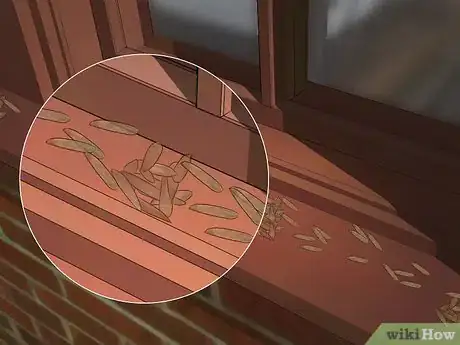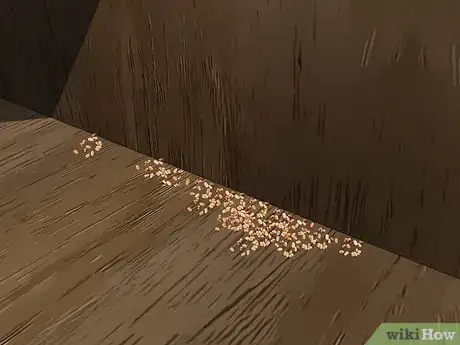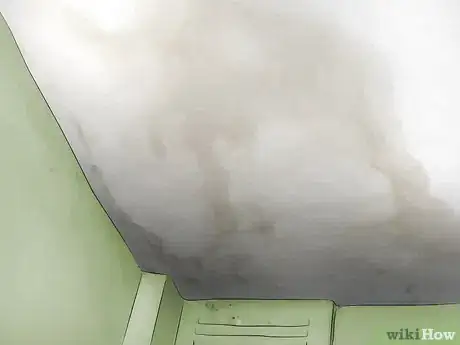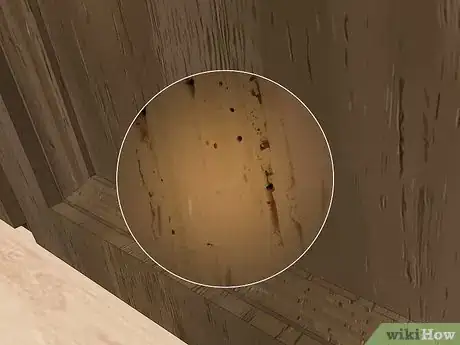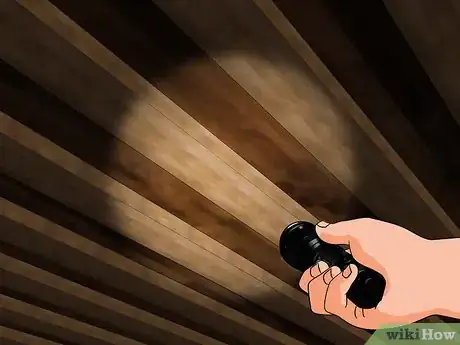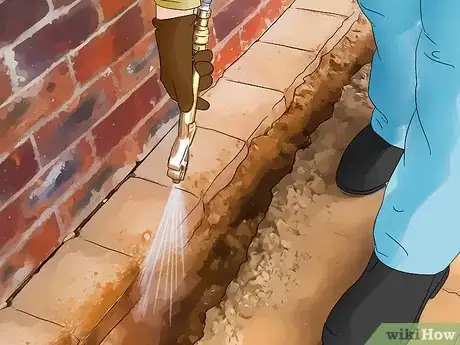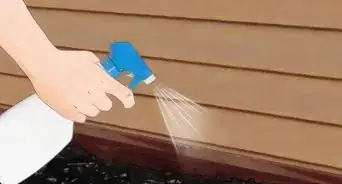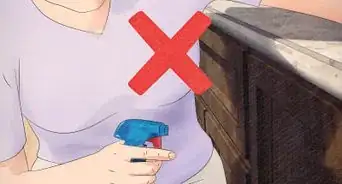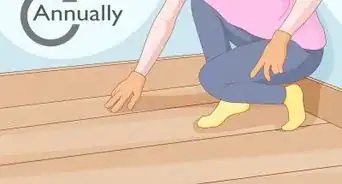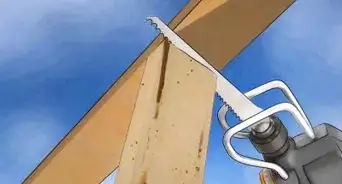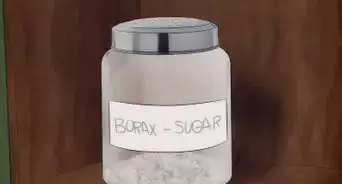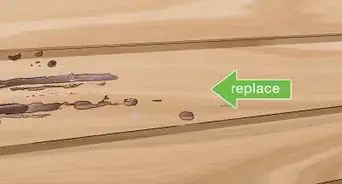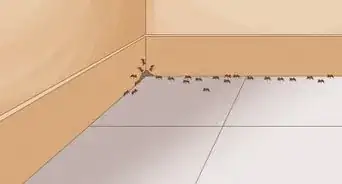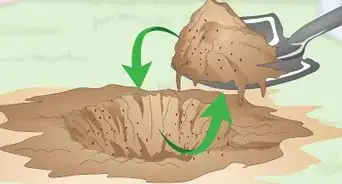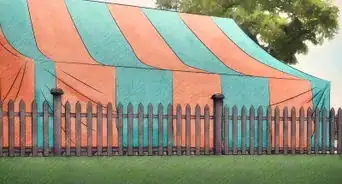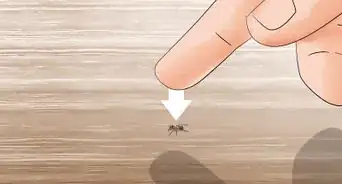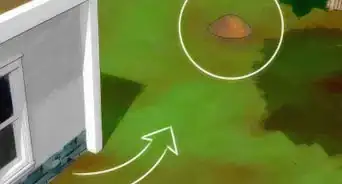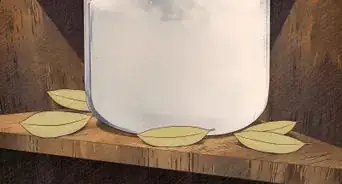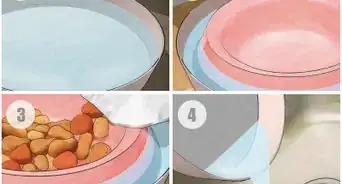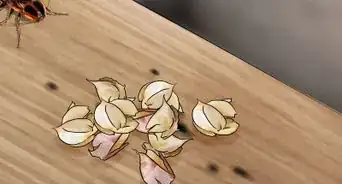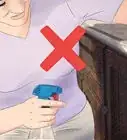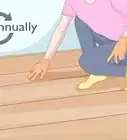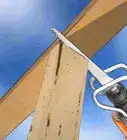This article was co-authored by Hussam Bin Break. Hussam Bin Break is a Certified Commercial Pesticide Applicator and Operations Manager. He and his brother Hussam co-founded Diagno Pest Control in the greater Philadelphia area in 2018, and have since expanded their services to include the New Jersey market. Diagno Pest Control has received Home Advisor's Top Rated and Elite Service Badges for quality of work and customer service.
wikiHow marks an article as reader-approved once it receives enough positive feedback. In this case, 100% of readers who voted found the article helpful, earning it our reader-approved status.
This article has been viewed 257,449 times.
You may be able to determine if you have a termite infestation by identifying swarming behavior, finding mud tunnels, and by examining damaged wood. Inspect the tunnels by using a pocketknife to break them open. Even if the tunnels are empty, you may still have a termite infestation. Inspect damaged wood by probing the wood with a pocketknife. The presence of mud tunnels or dried pieces of soil underneath the wood’s surface are signs of an infestation. Make sure to call a professional once you have determined that your house is infested with termites.
Steps
Identifying Swarming Behavior
-
1Look for swarming near lights. This is because light attracts flying termites, especially during the night. Also look for swarming near windows and doors. If you see a large congregation of termites in the air, then the termites are exhibiting swarming behavior. Swarming can occur during the day or night.[1]
- Swarming generally occurs in the spring months, i.e., March, April, May, and June.
- If you happen to see a termite fly out from under your porch, patio, or foundation, then this is a sure sign of an infestation.
-
2Observe piles of wings. Termites will shed their wings when they enter the next stage of their development. This usually occurs after the swarming period. In an infested home, you can often find piles of wings that have been shed by flying termites.[2]
- Shed wings look similar to tiny fish scales.
Advertisement -
3Look for piles of feces. Also called frass, termite droppings are ridged and small. They look like small, wood colored pellets. Oftentimes, you can find piles of feces near the openings of tunnels, as well as where they have eaten or nested.[3]
- Only certain species of termites will leave feces behind.
- Sweep up the feces and dispose of it. Check the spot daily to see if more fecal pellets appear. If they do, then this is a sure sign that you have an infestation.
Finding Tunnels
-
1Look for working tunnels. In an infested home, you will be able to find mud-like tunnels extending from the ground, up your concrete or stone foundation and to a wooden structure.[4] These tunnels are usually the size of a pen, but they can also be slightly larger or smaller.[5]
- If your home's foundation is made of hollow concrete blocks, you might not be able to see the termite tunnels. You'll need to look for the tunnels above the foundation instead.
- You may also be able to find tunnels on your floor joists, sill plates, support piers, and slabs, for example.
-
2Identify exploratory and drop tunnels. Exploratory or migratory tunnels can be found rising up from the soil but do not connect to wooden structures. Additionally, in an infested home, you can find drop tubes extending from a wooden structure back to the soil.[6]
-
3Break the tunnels open. When you identify mud tunnels, use a pocketknife to break open the tubes. If the tubes are active, you may be able to see worker termites. Worker termites are small and appear white or translucent. However, the absence of these termites does not mean that you do not have an infestation — the termites may have just moved on to somewhere else.[7]
- If the tunnel is rebuilt after a few days, then this is a sure sign that you have an infestation.
Observing the Wood in Your Home
-
1Look for swollen ceilings, floors, and walls. These areas may also appear to have water damage. This is due to the hollowing out of your wooden structures, which is caused by the termites’ excavations.[8]
- A mold or mildew-like odor may accompany a termite infestation. This is because both mold and termites thrive in moist environments.
-
2Observe holes in wooden structures. Tiny holes in wooden structures like walls and furniture are also signs of a termite infestation. Examine the holes. If you can identify pieces of soil around the edges of these holes, then you are dealing with an infestation.[9]
- Buckling paint and/or cracked wood are also signs of a termite infestation.
-
3Tap damaged wood with a hammer. If you hear a dull thud, then your wooden structures have been hollowed out. Pick the surface of the wood with a pocketknife. See if you can find tunnels or pieces of dried soil or mud inside the damaged wood.[10]
- These are signs of a termite infestation.
-
4Check your basement. Use a flashlight to examine wood construction in your basement, focusing on the areas where concrete connects with wood. Also examine the wood under your porch, wooden window frames and sills, joists, and supporting piers and posts.[11]
- Make sure to examine both the interior and exterior parts of your foundation.
-
5Contact a professional. If you have determined that your home is infested with termites, then you need to contact a professional. A professional will examine your house, confirm that you have an infestation, and advise you on what steps to take next.[12]
- Most do-it-yourself kits are not very effective at eliminating termite infestations.
- Make sure you contact a licensed pest management professional. You can find out if they're licensed by contacting your local department of agriculture.
- If you decide to hire a professional, try to save some of the termites so the professional is able to easily identify them.
References
- ↑ http://www.doityourselftermitecontrol.com/termite-home-inspections.html
- ↑ https://www.orkin.com/termites/termite-evidence/
- ↑ https://www.orkin.com/termites/termite-evidence/
- ↑ Hussam Bin Break. Pest Control Professional. Expert Interview. 28 June 2019.
- ↑ http://www.doityourselftermitecontrol.com/termite-home-inspections.html
- ↑ http://www.doityourselftermitecontrol.com/termite-home-inspections.html
- ↑ http://www.doityourselftermitecontrol.com/termite-home-inspections.html
- ↑ https://www.orkin.com/termites/termite-damage-signs/
- ↑ http://www.doityourselftermitecontrol.com/termite-home-inspections.html
- ↑ http://www.doityourselftermitecontrol.com/termite-home-inspections.html
- ↑ http://www.doityourselftermitecontrol.com/termite-home-inspections.html
- ↑ http://www.westernexterminator.com/termites/everything-you-should-know-about-flying-termites/
- ↑ https://www.modernpest.com/blog/3-key-differences-between-winged-termites-and-flying-ants/

